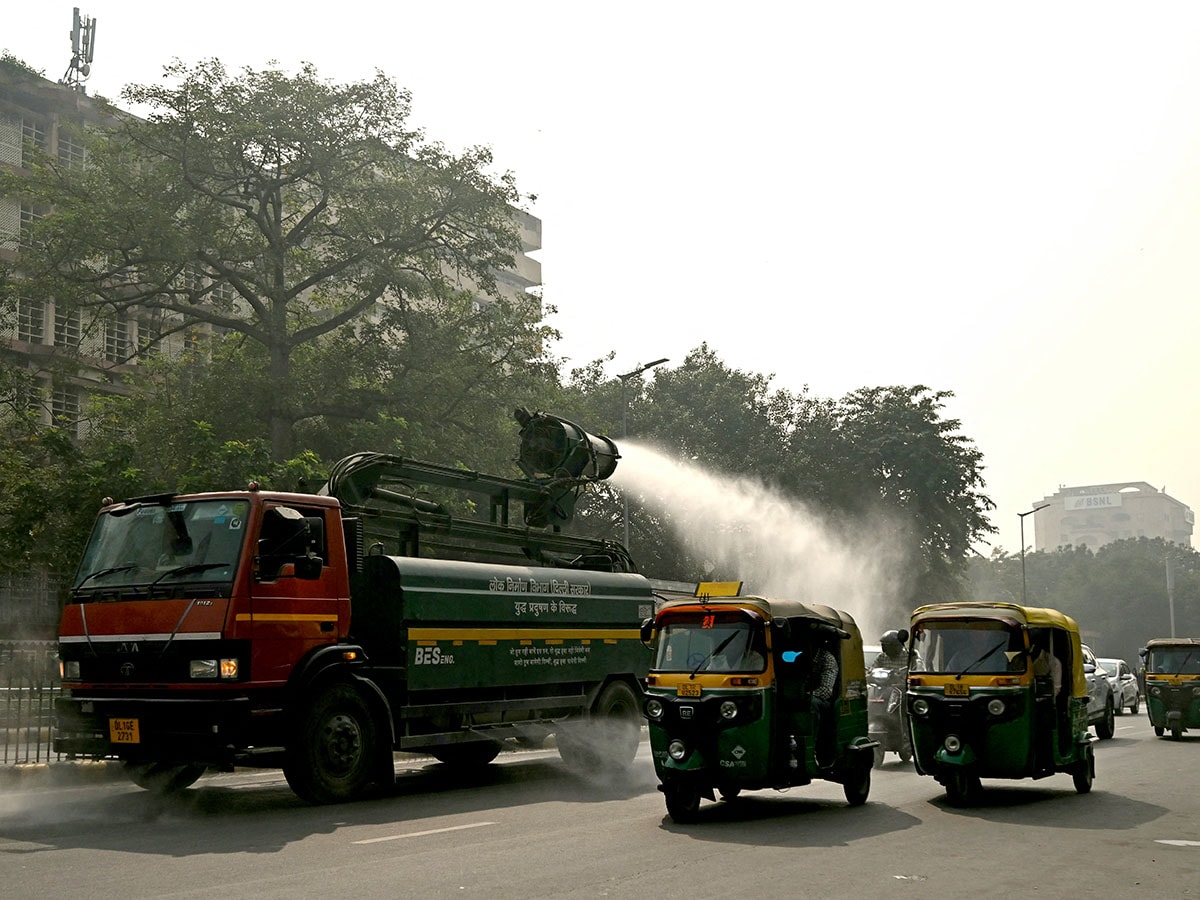
New Delhi chokes as 'hazardous' air pollution returns
New Delhi is home to more than 30 million people and is regularly ranked as one of the most polluted urban areas on the planet
 A vehicle (L) of the Public Works Department (PWD) sprays water using an anti-smog gun to curb air pollution amid smoggy conditions in New Delhi on October 22, 2024.
Image: Money Sharma/ AFP
A vehicle (L) of the Public Works Department (PWD) sprays water using an anti-smog gun to curb air pollution amid smoggy conditions in New Delhi on October 22, 2024.
Image: Money Sharma/ AFP
Acrid clouds engulfed India's capital on Wednesday as air pollution fuelled by fireworks and farm stubble burning was ranked "hazardous" by monitors for the first time this winter.
New Delhi is home to more than 30 million people and is regularly ranked as one of the most polluted urban areas on the planet.
Commuters walking to work cough through poisonous smog that kills thousands each year, according to health experts, although few in the sprawling city wear masks.
The city's famous India Gate monument was wreathed in foul-smelling mist on Wednesday.
"These days if you want to go out, you can't think of leaving without a mask," teacher Mamta Chauhan, 27, told AFP.

















